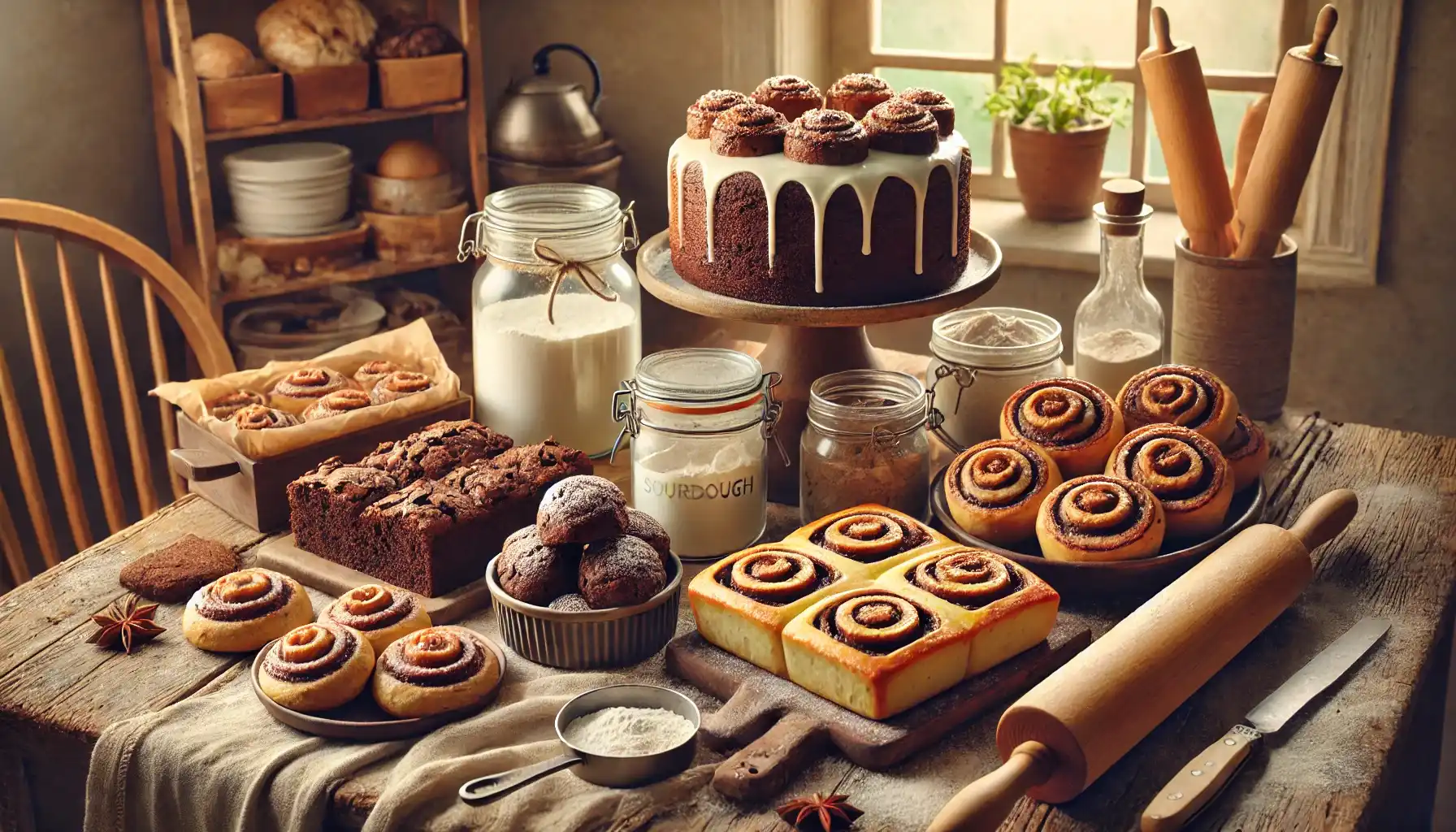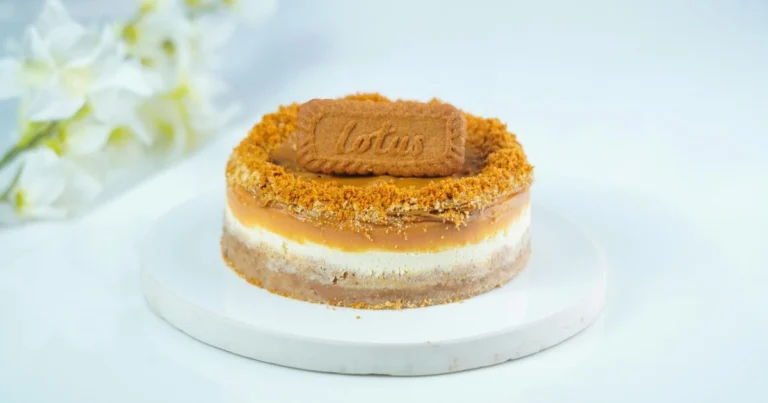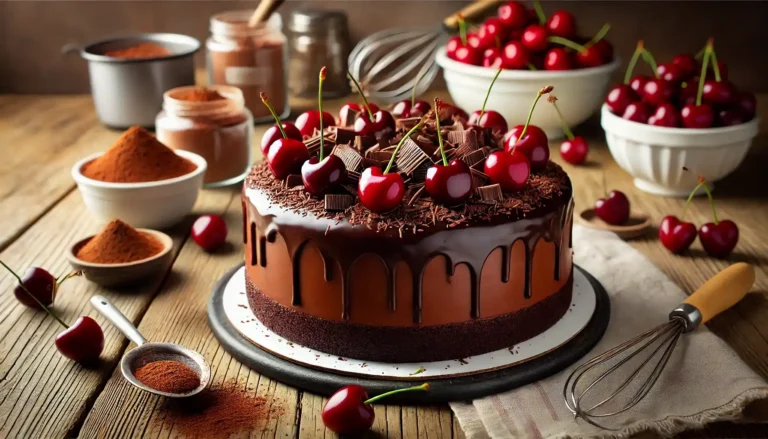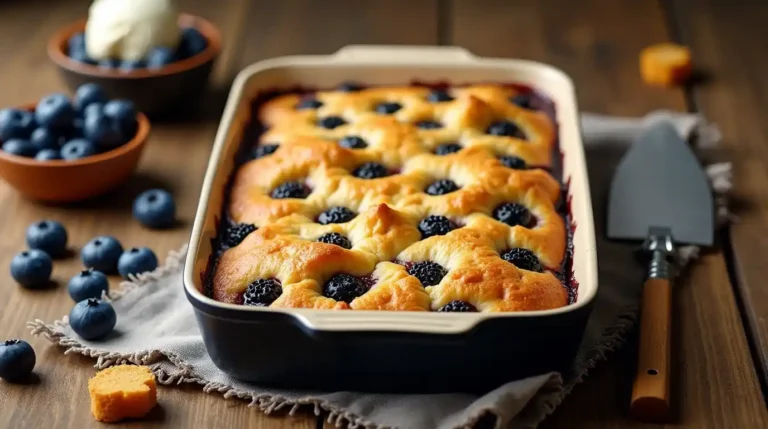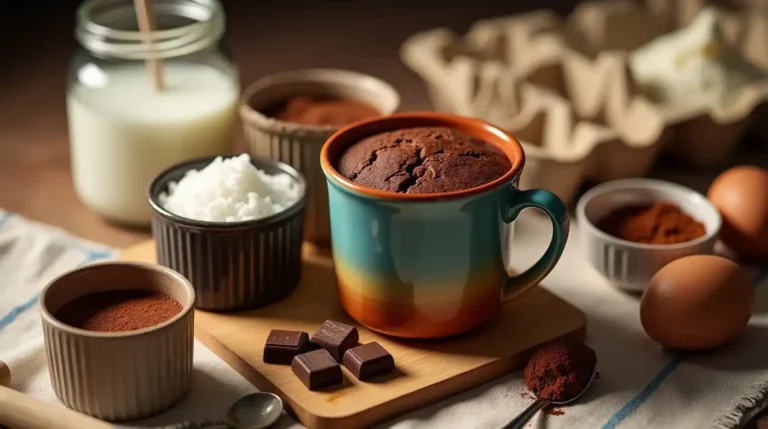Sourdough Dessert Recipes: A Delicious Twist on Classic Baking
Sourdough isn’t just for bread anymore. This flavorful dough, created by naturally fermenting flour and water, is a beloved staple in many kitchens. But did you know that you can use sourdough starter in sweet treats, too? In this article, we’ll explore a range of sourdough dessert recipes that highlight the tangy, complex flavors only sourdough can offer. Whether you’re a seasoned baker or just curious to try something new, these recipes will elevate your dessert game and help you make the most of your sourdough starter.
Table of Contents
What Makes Sourdough Desserts Special?
Sourdough’s distinct taste comes from the wild yeast and bacteria cultures in the starter. When used in sweets, that mild tangy note offers a unique flavor profile. The fermentation process also improves the texture of baked goods, making them tender and rich.
Related keywords to keep in mind:
- Fermentation benefits
- Artisan baking
- Sourdough discard recipes
Benefits of Using Sourdough in Desserts
- Enhanced Flavor: The mild sourness balances sweetness, preventing your desserts from tasting too sugary.
- Improved Texture: Fermented dough often results in softer cakes, cookies, and pastries.
- Digestibility: Some bakers believe the fermentation process can make baked goods easier on the stomach.
How to Get Started with Sourdough Dessert Recipes
Getting started with sourdough desserts is easier than you might think. All you need is a bubbly, active sourdough starter and a reliable recipe. If you’re new to maintaining a starter, check out King Arthur Baking’s guide for expert tips on feeding, storing, and troubleshooting your sourdough starter.
Steps to prepare your starter for dessert baking:
- Feed Your Starter: Ensure it has doubled in size and is well-fed.
- Check its Activity: Your starter should be active, showing bubbles and a pleasant sour aroma.
- Consider Timing: Sourdough desserts may need extra rising or resting time for the best flavor and texture.
Best Types of Sourdough for Desserts
Not all sourdough starters are the same. Starters may vary in hydration levels (the ratio of water to flour), feeding schedule, and even the types of flour used.
Hydration Levels
- 100% Hydration Starter: Commonly used in many recipes. Equal parts flour and water by weight.
- Stiff Starter (50-60% Hydration): Ideal for pastries where structure is crucial.
- Liquid Starter (125%+ Hydration): Offers a looser consistency, great for batters like pancakes or brownies.
Flour Types
- All-Purpose Flour: Versatile and easy to work with for most sweet bakes.
- Whole Wheat Flour: Lends a nutty flavor, pairing well with warm spices.
- Rye Flour: Adds deeper, earthy tones to desserts.
Top Sourdough Dessert Recipes
Below is a quick-reference table for some popular sourdough dessert recipes. Each entry offers a brief overview to guide you in choosing the perfect sweet treat.
| Recipe | Key Ingredients | Approx. Time | Baking Tips |
|---|---|---|---|
| Sourdough Brownies | Sourdough starter, chocolate, cocoa powder, butter | 45 minutes | Ensure your chocolate is melted and cooled before mixing. |
| Sourdough Chocolate Cake | Sourdough starter, flour, sugar, cocoa powder, oil | 60–70 minutes | Use hot water for a deeper chocolate flavor. |
| Sourdough Cinnamon Rolls | Sourdough starter, flour, sugar, cinnamon, butter | 2–3 hours (inc. rising) | Let them rise in a warm area for optimal fluffiness. |
| Sourdough Cookies | Sourdough discard, brown sugar, eggs, chocolate chips | 30 minutes | Refrigerate dough for 15 mins for a chewy texture. |
| Sourdough Banana Bread | Sourdough discard, mashed bananas, flour, sugar, butter | 60 minutes | Mix bananas well and don’t over-stir the batter. |
| Sourdough Apple Crumble | Sourdough discard, apples, cinnamon, brown sugar, butter | 40–45 minutes | Use firm apples (like Granny Smith) for the best tart flavor. |
Sourdough Brownies: A Must-Try Favorite
Ingredients Breakdown
- Sourdough Starter (Active or Discard): Provides moisture and a slight tang.
- Chocolate & Cocoa Powder: Source of the rich, fudgy flavor.
- Butter: Ensures a luscious, velvety texture.
- Sugar: Balances out the sour tang from the starter.
Baking Method
- Melt the Butter and Chocolate: Do this gently over low heat or in a microwave. Let the mixture cool slightly.
- Combine Dry Ingredients: In a separate bowl, whisk cocoa powder, flour, and a pinch of salt.
- Mix in Sourdough Starter: Stir the starter into the cooled chocolate-butter mixture.
- Fold in Dry Ingredients: Mix just until combined. Over-mixing can lead to tough brownies.
- Bake: Transfer batter to a greased pan and bake at 350°F (175°C) for around 25 minutes, or until a toothpick comes out with moist crumbs.
Mastering Sourdough Chocolate Cake
A sourdough chocolate cake is an excellent way to transform your sourdough starter into a show-stopping dessert. This cake is known for its moist crumb and deep chocolate taste.
Key Tips
- Use the Right Starter Consistency: A 100% hydration starter is easiest for this recipe.
- Employ High-Quality Cocoa: Taste is everything, so opt for premium cocoa powder.
- Don’t Over-Bake: Keep an eye on the cake as it nears the end of its bake time. A few extra minutes could dry it out.
Easy Variations
- Add Coffee: Replace some water with strong coffee for a mocha twist.
- Incorporate Spices: Cinnamon or chili powder can highlight the chocolatey notes.
- Frosting Options: Chocolate ganache or cream cheese frosting both pair beautifully.
Making Sourdough Cinnamon Rolls
Sourdough cinnamon rolls are incredibly soft, with a light tang that complements the sweet, gooey cinnamon-sugar filling. The dough requires at least one rise, often overnight, allowing the flavors to deepen.
- Prepare Dough: Combine sourdough starter, flour, sugar, and a bit of salt.
- Rise Overnight: Cover and let it sit in the fridge for a slow fermentation, intensifying the flavor.
- Spread Filling: Roll out the dough, then brush with melted butter and sprinkle with cinnamon and sugar.
- Second Rise: Once cut into rolls, let them rest until puffy.
- Bake and Glaze: Bake until golden brown, and drizzle with cream cheese icing or a simple sugar glaze.
Related keyword: Sourdough breakfast pastries
Tips for Successful Sourdough Dessert Baking
- Plan Ahead: Most sourdough desserts require extra resting or rising time.
- Use a Digital Scale: Accurate measurements ensure consistent results.
- Adjust Sweetness Carefully: Sourdough’s tang can reduce the perception of sweetness, so taste your batter or dough before baking.
- Don’t Waste Discard: Keep leftover starter in the fridge and use it in cookies or pancakes.
Storing Your Desserts
- Room Temperature: Most sourdough cookies, cakes, and brownies can sit in an airtight container for up to three days.
- Refrigeration: Cream cheese frosting or fruit-based fillings may require chilling.
- Freezing: You can freeze fully baked items for up to three months. Thaw at room temperature for best results.
Frequently Asked Questions
Q1: Can I use sourdough discard for desserts?
A: Absolutely. Many sourdough dessert recipes even call specifically for discard. It’s a great way to reduce waste and add a subtle tang to your sweets.
Q2: Does sourdough tang affect the dessert’s sweetness?
A: Yes, the sour flavor can balance out overly sweet recipes, resulting in a more nuanced taste profile.
Q3: How do I ensure my desserts aren’t too dense?
A: Make sure your sourdough starter is active and well-fed, and avoid over-mixing the batter or dough.
Q4: Can gluten-free sourdough starters work in desserts?
A: Yes. If you maintain a gluten-free sourdough starter, you can adapt most recipes by substituting gluten-free flours, though texture may vary.
Explore and Experiment with Sourdough Dessert Recipes
Sourdough dessert recipes open up a world of creative baking possibilities. By harnessing the fermentation process, you can craft sweets that are richer in flavor, more tender in crumb, and more interesting to the palate. Whether you prefer fudgy brownies, moist chocolate cake, or gooey cinnamon rolls, sourdough can elevate classic favorites to gourmet status.
Remember to experiment with different flours and hydration levels for unique results. Don’t forget that sourdough is all about patience and adaptability. With practice, your sourdough skills and baking confidence will grow, and you’ll be whipping up all sorts of delicious sourdough desserts in no time.
If you’re eager to learn more about the science behind sourdough and perfect your starter, take a look at King Arthur Baking’s guide. It’s a trustworthy resource for bakers of every skill level.
So go ahead—treat yourself (and your friends and family) to something tangy and sweet. Your sourdough starter will thank you. Happy baking!

